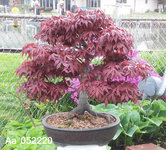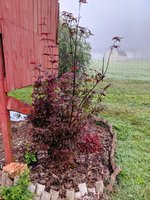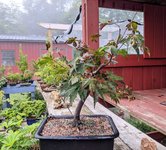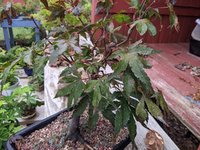I'll be receiving 2 x 1 quart size trees in a week or so . Second tree will be grown in a large pot for bonsai.
First tree is for landscape use and I would l would like your opinion as to whether I should let it grow naturally or wire it for some subtle shape while it's young and still flexible. Nothing extreme, still aiming for upright growth and mostly a normal tree. As a mature tree, I will attempt to stay on top of pruning, so it won't be going wild. I'm interested to watch the two trees progress in different environments.
First tree is for landscape use and I would l would like your opinion as to whether I should let it grow naturally or wire it for some subtle shape while it's young and still flexible. Nothing extreme, still aiming for upright growth and mostly a normal tree. As a mature tree, I will attempt to stay on top of pruning, so it won't be going wild. I'm interested to watch the two trees progress in different environments.




